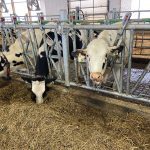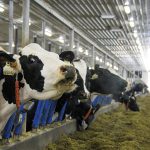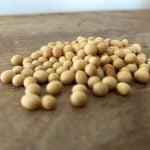
Tag Archives Dairy cattle

First-of-its-kind cattle methane limiter approved for Canada
Enteric methane emissions from cattle contributes 3.3 per cent of Canada’s total GHG emissions

Western Milk Pool marks concentration plant progress
The plant will be in Alberta, but Manitoba sector says a rising tide lifts them too

Taking the bite out of cold-weather livestock care
Strategies for keeping calves warm and healthy
![“When we started LPI, this formula [was] very simple to use and simple to interpret.” – Brian Van Doormal, Lactanet.](https://static.manitobacooperator.ca/wp-content/uploads/2023/11/29161835/Jersey_Cow_on_a_sunny_afternoon_GettyImages-95742205_cmyk-150x150.jpg)
Lactanet embarks on LPI modernization process
Predictive production index has become cumbersome, complicated

The effects of mycotoxin exposure in cattle
Dairy cattle are often affected by multiple mycotoxins when levels reach a damaging threshold in feed

New additive touted for feed efficiency, SNF control
Strong results seen in Mexico trial for biocatalyst

Opinion: Keep balance in research funding

Bridging the gap for livestock data
Face of Ag: New professor says data science can provide significant value to animal science

Calf housing, stocking rate changes likely to affect Manitoba dairy farms
Producers, animal welfare groups praised a new NFACC dairy cattle code of conduct, though some drawbacks were noted

Continuous tie-stall housing to be phased out in new dairy code of practice
Producer, animal welfare groups praise new code; some drawbacks were noted


